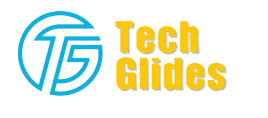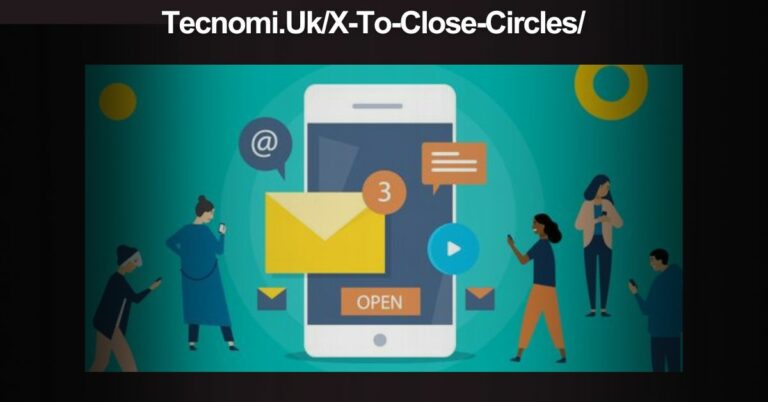Smoothstack Lawsuit – My Honest Review As A Former Employee!
During my experience with Smoothstack, I appreciated the training opportunities they provided, which helped me enhance my skills. However, I also encountered some challenges with communication and support during the onboarding process that left me feeling uncertain at times.
The “Smoothstack lawsuit” has drawn significant attention in the U.S. tech and employment sectors due to serious allegations of unfair practices. Known for its training and deployment of tech talent, Smoothstack now faces legal scrutiny that questions employee rights and industry standards.
Stay tuned with us as we share insights from my experience in ‘smoothstack lawsuit-My Honest Review As A Former Employee!.’ We’ll discuss the implications of the lawsuit and what it means for future tech talent!
Contents
- What is Smoothstack and How Does It Bridge the Skills Gap?
- Overview of the Smoothstack Lawsuit – Get the Inside Scoop!
- Key Allegations and Claims – Uncover the Truth!
- What should potential trainees consider before joining Smoothstack?
- Responses from Smoothstack and Stakeholders – Discover the Reactions!
- Understanding Lawsuits in Training & Staffing-Expand Your Knowledge!
- Alternatives to the Smoothstack Model-Discover Your Options!
- How has Smoothstack responded to the lawsuit?
- Potential Impact on the Tech Employment Model- Understand the Future!
- FAQ’s:
- 1. What is the Smoothstack lawsuit about?
- 2. Who filed the lawsuit against Smoothstack?
- 3. How has Smoothstack responded to the lawsuit?
- 4. What are the potential outcomes of the lawsuit?
- 5. How might the Smoothstack lawsuit affect other tech training companies?
- 6. What specific allegations are made against Smoothstack in the lawsuit?
- 7. What are the potential outcomes of the Smoothstack lawsuit?
- 8. How does the Smoothstack model compare to traditional education paths?
- Conclusion:
What is Smoothstack and How Does It Bridge the Skills Gap?
Smoothstack is a training and staffing company designed to prepare aspiring tech professionals for careers in the technology industry. It addresses the growing skills gap by offering intensive, hands-on training programs that equip participants with the necessary technical skills and knowledge to succeed in various tech roles.
Key Features of Smoothstack’s Approach:
- Intensive Training Programs: Smoothstack provides immersive training designed to teach in-demand tech skills quickly, enabling participants to enter the job market sooner.
- Mentorship and Support: The company pairs trainees with experienced mentors who guide them throughout their training, offering personalised support and insights into the tech industry.
- Job Placement Services: Smoothstack actively assists graduates in securing job placements with partner companies, facilitating a smooth transition from training to employment.
- Focus on Real-World Experience: The training emphasises practical, hands-on projects that mirror real industry challenges, ensuring that graduates are job-ready.
- Accessibility: By offering an alternative to traditional four-year degrees, Smoothstack opens doors for individuals who may not have the time or resources to pursue a conventional education path.
Through these strategies, Smoothstack effectively bridges the skills gap in the tech industry, providing a pathway for motivated individuals to acquire the skills needed for successful careers in technology.
Overview of the Smoothstack Lawsuit – Get the Inside Scoop!
Background and Timeline:
The smoothstack lawsuit emerged in response to complaints from former employees, alleging certain practices that some find exploitative. Understanding the case timeline—from the initial complaint filing to its present status—helps contextualise the stakes involved.
As the legal proceedings unfold, the outcomes could significantly impact not only Smoothstack but also the broader landscape of tech training and employment practices. Keeping an eye on these developments is essential for those interested in the evolving nature of workforce dynamics in the tech industry.
Details of the Complaint:
The smoothstack lawsuit points to specific grievances. Former employees claim that Smoothstack’s contracts contained restrictive clauses, demanding repayment of training costs if employees left before a certain period. Understanding these allegations is crucial, as it highlights the balance between corporate interests and worker rights.
Additionally, these claims raise broader questions about the ethical implications of such training agreements and whether they hinder career mobility for aspiring tech professionals. As the case progresses, it may prompt a reevaluation of similar practices within the industry.
Key Allegations and Claims – Uncover the Truth!
Training Costs and Employment Contracts:
One significant complaint involves repayment clauses requiring employees to reimburse training costs if they depart prematurely. Critics argue that such clauses can create a sense of indentured servitude, particularly for those trying to start their careers.
Employment Terms and Worker Rights:
Additionally, the lawsuit alleges that Smoothstack’s contract terms may violate labour laws by imposing unfair restrictions. This includes potential issues around non-compete clauses and employment classifications.
Employee Testimonials and Alleged Misrepresentation:
Testimonials from former employees suggest that some felt misled by Smoothstack’s promises. Exploring these personal stories is essential, as they illustrate the real-world impact of such legal arrangements on individuals’ lives.
What should potential trainees consider before joining Smoothstack?
Before enrolling in Smoothstack, potential trainees should consider the following:
- Contract Terms: Review any restrictions, like non-compete clauses or repayment obligations.
- Training Quality: Assess the curriculum and training methods for relevance to industry standards.
- Job Placement Rates: Investigate placement statistics and types of positions secured by graduates.
- Alumni Success Stories: Look for testimonials from past graduates about their experiences.
- Support and Resources: Evaluate the level of mentorship and career support available.
- Financial Considerations: Consider program costs against potential earning power.
- Industry Demand: Research the demand for skills taught in the program.
- Personal Goals: Reflect on how Smoothstack aligns with your career aspirations in tech.
By taking these factors into account, trainees can make informed decisions about joining smoothstack lawsuit.
Responses from Smoothstack and Stakeholders – Discover the Reactions!
Official Statements from Smoothstack:
Smoothstack has responded to the lawsuit by asserting the legality of its practices, noting that its training program is a valuable resource. They argue that these repayment clauses ensure a commitment from employees, which is necessary due to the resources invested in training.
Industry Reactions and Commentaries:
The smoothstack lawsuit has sparked discussions among industry professionals. Some believe Smoothstack’s model is a valuable solution to tech shortages, while others argue it is exploitative.
Understanding Lawsuits in Training & Staffing-Expand Your Knowledge!
Smoothstack lawsuits in the training and staffing industry are increasingly common, necessitating an understanding of key legal issues and implications for both employees and employers.
Common Legal Issues:
- Contractual Disputes: Conflicts often arise over the terms of training contracts, including job placement guarantees and non-compete clauses.
- Misclassification of Workers: Companies may face lawsuits for improperly classifying workers as independent contractors, denying them benefits and protections.
- Wage and Hour Violations: Issues such as unpaid overtime can lead to legal action against employers who do not comply with labour laws.
- Discrimination Claims: Allegations of workplace discrimination or harassment can emerge, emphasising the need for a safe and inclusive environment.
- Breach of Fiduciary Duty: Staffing agencies may be accused of failing to act in the best interests of trainees or clients.
Implications for Businesses:
- Financial Consequences: Legal disputes, including legal fees and potential settlements, can incur significant costs.
- Reputational Damage: Lawsuits can harm a company’s reputation, affecting its ability to attract talent and clients.
- Operational Changes: Companies may need to revise their practices to reduce litigation risks.
- Increased Regulation: Heightened scrutiny may lead to more regulations, requiring businesses to ensure compliance with labour laws.
Rights of Workers:
- Awareness of Rights: Workers should understand their rights regarding pay and workplace conditions to advocate for themselves.
- Legal Protections: Labor laws protect employees from discrimination and ensure fair wages.
- Access to Legal Resources: Workers can seek legal counsel if disputes arise.
- Whistleblower Protections: Employees reporting illegal practices may be protected from retaliation.
Alternatives to the Smoothstack Model-Discover Your Options!
While Smoothstack offers a unique training and staffing approach, several alternatives provide aspiring tech professionals with viable pathways into the industry. Bootcamps like General Assembly and Coding Dojo deliver intensive coding and tech skills training with hands-on projects.
Online platforms like Coursera and Udacity offer flexible learning opportunities in various tech fields, often with recognised certifications. Additionally, traditional university degree programs still hold value, providing comprehensive education and networking opportunities. Exploring these alternatives can help individuals find the best fit for their career goals in tech.
How has Smoothstack responded to the lawsuit?
Smoothstack has responded to the lawsuit by publicly addressing the claims and maintaining that its training and employment practices are designed to benefit aspiring tech professionals. The company asserts that its model is structured to equip trainees with skills and experience that can open doors to long-term tech careers.
Smoothstack has also stated that the repayment clauses and contractual terms are standard practices intended to ensure a return on investment in training. The company emphasises its commitment to ethical practices, expressing confidence that its program model aligns with industry standards.
Additionally, Smoothstack has voiced its willingness to clarify its practices, inviting an open dialogue with stakeholders to address any concerns. By reaffirming its mission, the company seeks to assure both current employees and future trainees of its dedication to fair and sustainable employment practices.
Potential Impact on the Tech Employment Model- Understand the Future!
Exploring the Impact on Similar Companies:
Smoothstack’s legal challenges could set a precedent for other tech training companies. Examining how this Smoothstack lawsuit might influence industry-wide practices and alter perceptions of tech staffing models is essential.
The outcome may encourage companies to adopt more transparent and equitable practices, fostering a culture of accountability. Additionally, it could empower employees to demand better working conditions and support, ultimately reshaping the expectations within the tech industry regarding training and employment practices.
Future of Training-Repayment Clauses:
Companies may need to reconsider repayment clauses and other restrictive practices to avoid similar lawsuits if the courts favour the plaintiffs. This could lead to a more supportive environment for employees, where training costs are absorbed by the employer rather than passed on to the worker.
Furthermore, companies might implement clearer communication regarding the terms of training contracts to ensure that potential recruits fully understand their commitments. As a result, organisations could foster stronger relationships with employees, enhancing retention rates and overall job satisfaction in the long run.
Such changes could also promote a more ethical approach to workforce development, aligning business practices with evolving employee expectations and industry standards.
FAQ’s:
1. What is the Smoothstack lawsuit about?
The lawsuit alleges that Smoothstack’s employment practices are exploitative, primarily focusing on repayment clauses in employee contracts.
2. Who filed the lawsuit against Smoothstack?
Former employees who claimed they experienced unfair treatment and restrictive contract terms initiated the legal action.
3. How has Smoothstack responded to the lawsuit?
Smoothstack maintains that its practices are legal and argues that repayment clauses ensure commitment from employees who benefit from its training program.
4. What are the potential outcomes of the lawsuit?
If successful, the lawsuit could lead to changes in employment contracts and industry practices related to training repayment clauses.
5. How might the Smoothstack lawsuit affect other tech training companies?
This case could set a precedent for how similar companies approach employment contracts, repayment clauses, and employee freedom.
6. What specific allegations are made against Smoothstack in the lawsuit?
The lawsuit includes allegations of unfair labour practices, misclassification of employees, and potential violations of employment contracts.
7. What are the potential outcomes of the Smoothstack lawsuit?
Possible outcomes include financial penalties, changes to business practices, or a settlement between the parties involved.
8. How does the Smoothstack model compare to traditional education paths?
Smoothstack’s model offers intensive, hands-on training and job placement, aiming to fast-track individuals into tech careers compared to the longer duration of traditional degree programs.
Conclusion:
Understanding the nuances of the Smoothstack lawsuit and the broader implications within the tech staffing industry is essential for both employees and employers. By exploring alternative models and staying informed about labour rights, individuals can make empowered choices in their career paths.






